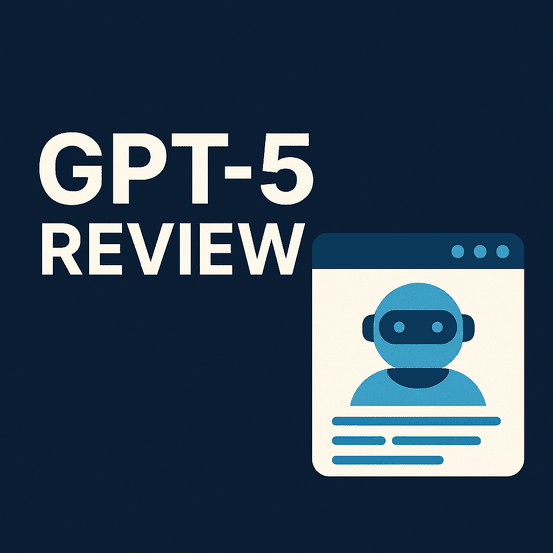Engineering Superpowers: Coding with GPT-5
Let’s begin where GPT-5 truly shines: software development.
OpenAI claims GPT-5 is “a true coding collaborator.” Benchmarks like SWE-Bench (74.9% accuracy) and Ader Polyglot (88%) reinforce this claim. And indeed, the model displays an impressive understanding of:
- Existing codebases
- Bug fixing
- Refactoring
- Generating multi-file applications
🎮 Real-World Test 1: 2D Space Game
We asked GPT-5 to build a self-contained 2D space game in which a spaceship avoids and destroys asteroids. The model generated complete HTML + JS code, respecting prompt constraints, and the result worked—with basic functionality.
However, there were clear issues:
- No runtime instructions provided
- UI lacked polish
- Movement was janky
- Code wasn’t modular
Takeaway: GPT-5 can build basic games from scratch but still requires a developer’s hand for refinement and deployment. It’s more of an “accelerator” than a “one-click creator.”
Tool Use & Agentic Workflows
This is where GPT-5 separates itself from GPT-4 and other predecessors.
It can chain tools, reason across steps, and manage multiple agents/tools simultaneously. In one test, I asked it to build a Lego-style brutalist building editor, and it generated a two-file solution (index.html and main.js) using modular DOM elements.
While the output code was syntactically correct and well-commented, the app failed to render anything useful when served. Despite the failure, this revealed GPT-5’s ability to think in multi-file, componentized architecture, a big leap over past models.
Agentic Control
GPT-5 introduces intelligent agentic behavior:
- Parallel tool execution
- Sequencing without instruction loss
- Coherent memory across steps
- Error-handling improvements
- Recovery from incomplete inputs
This makes GPT-5 viable for autonomous workflows, potentially challenging startups focused on multi-agent orchestration. Expect to see GPT-5 integrated into production tools for task automation, ETL pipelines, and data engineering orchestration very soon.
Real-World Strategy Task
To test high-level reasoning, we gave GPT-5 a CEO crisis prompt: navigate ambiguity, communicate under pressure, and make irreversible decisions.
The output? Stunningly good.
GPT-5 delivered a response that balanced:
- Immediate accountability
- Public trust building
- Long-term restructuring
- Ethical transparency
It synthesized corporate ethics, risk communication, and regulatory realism into one coherent action plan. This wasn’t just filler—it was a genuine masterclass in leadership communication.
GPT-5: Guardrails & Humor
We tested GPT-5’s moderation system with an intentionally humorous (borderline inappropriate) prompt. The model’s response was measured, respectful, and displayed mature filtering without being patronizing. It acknowledged humor while preserving social boundaries.
No hallucinations. No trolling. Just balanced guidance.
Multilingual & Obscure Language Translation
We tested the phrase: “Sometimes you just have to let go” in over a dozen languages including Urdu, Saraiki, Malagasy, and Ancient Runes.
GPT-5:
- Handled well-known languages with near-native phrasing
- Managed obscure and regional languages with structurally accurate, if slightly semantically shallow, translations
- Generated random language output with plausible structure
This shows GPT-5’s upgraded token diversity, multilingual embeddings, and capacity to handle edge cases—great news for global applications.
GPT-5 Weak Spots & Limitations
Let’s be clear: GPT-5 is not flawless.
- Load latency made testing difficult
- Code often lacks execution instructions
- Multimodal capabilities are not fully live
- Certain UI components felt underbaked
- Creative outputs (e.g., humor, fiction) remain solid, but not significantly stronger than GPT-4
Developer Experience for GPT-5
From the API side:
- New controls include reasoning effort, response style, and custom tool support
- Output format flexibility: plain text, no JSON required
- Multiple model sizes allow cost-performance trade-offs
- Early API access seems tied to Playground first, with ChatGPT rollout staggered
Final Verdict: Intentional Intelligence
If GPT-4 was a generalist, GPT-5 is a specialist with initiative.
It acts with intention, follows complex instructions closely, and excels at structured, multi-step reasoning. It’s not just reactive—it feels agentic, like it’s trying to solve your problem, not just respond to your input.
That said, don’t expect it to “just work” every time. It’s still an assistant, not a replacement.
One-Word Summary: Deliberate
GPT-5 delivers deliberate, goal-oriented intelligence. It’s precise, powerful, and collaborative—but demands thoughtful prompting to unlock its full potential.
Have you tried using GPT-5 yet? What’s your verdict?
